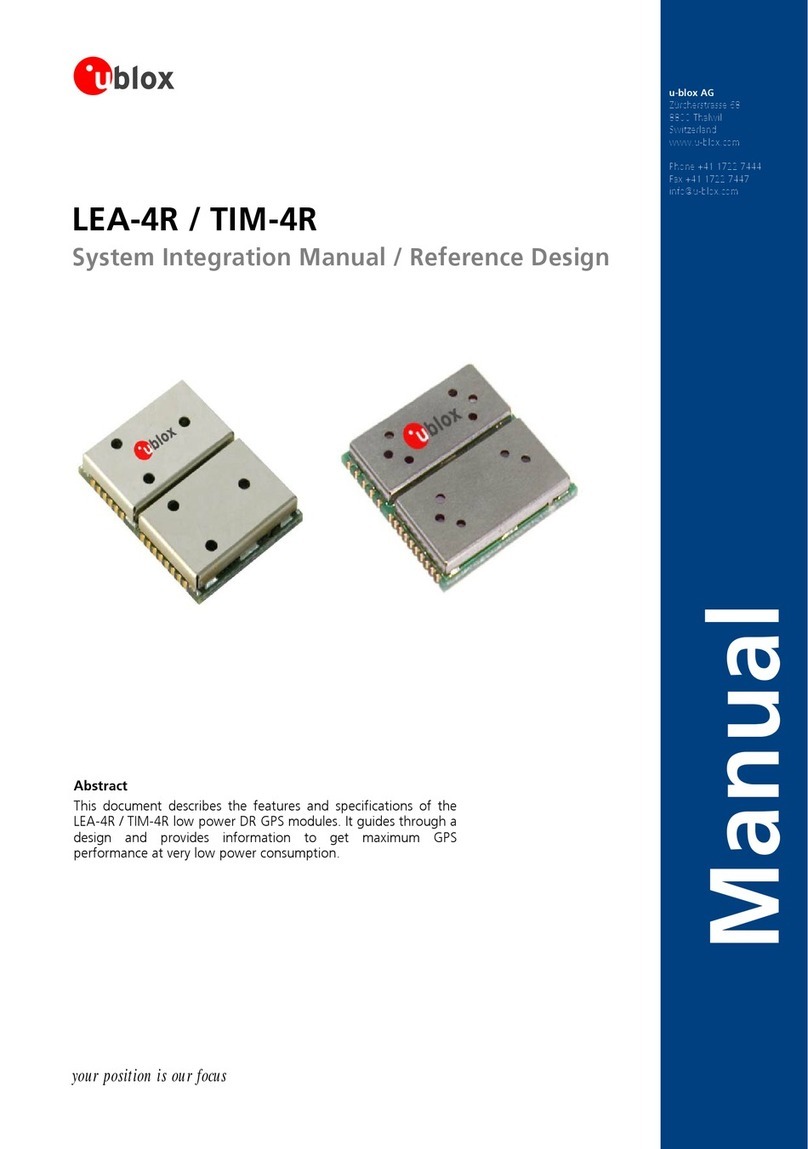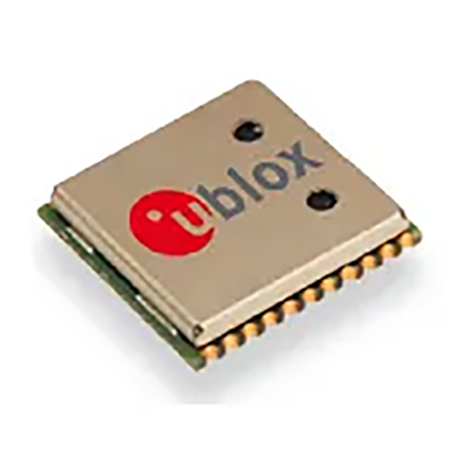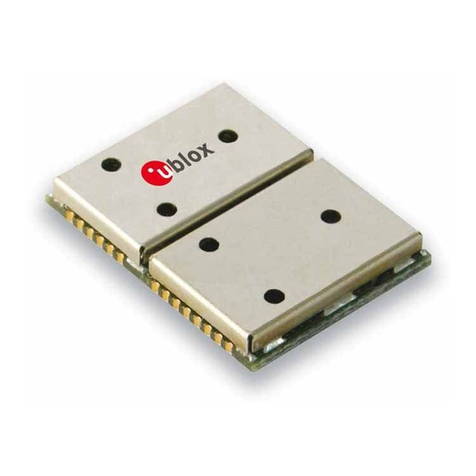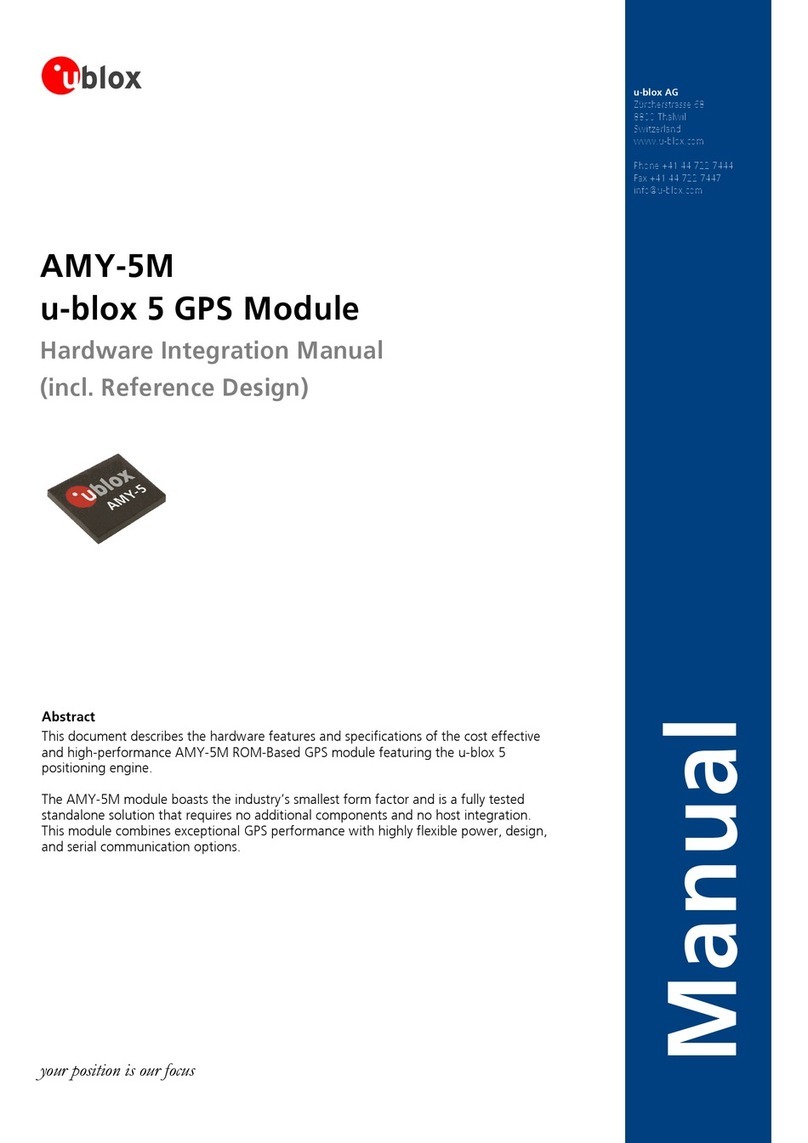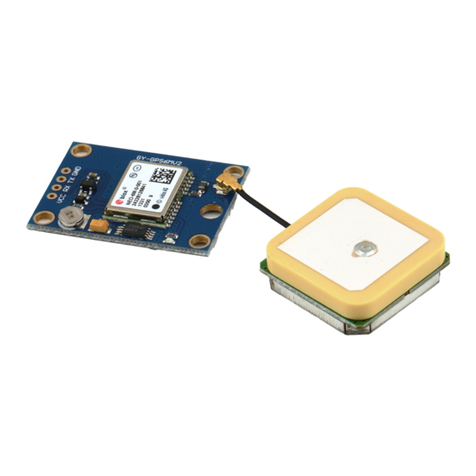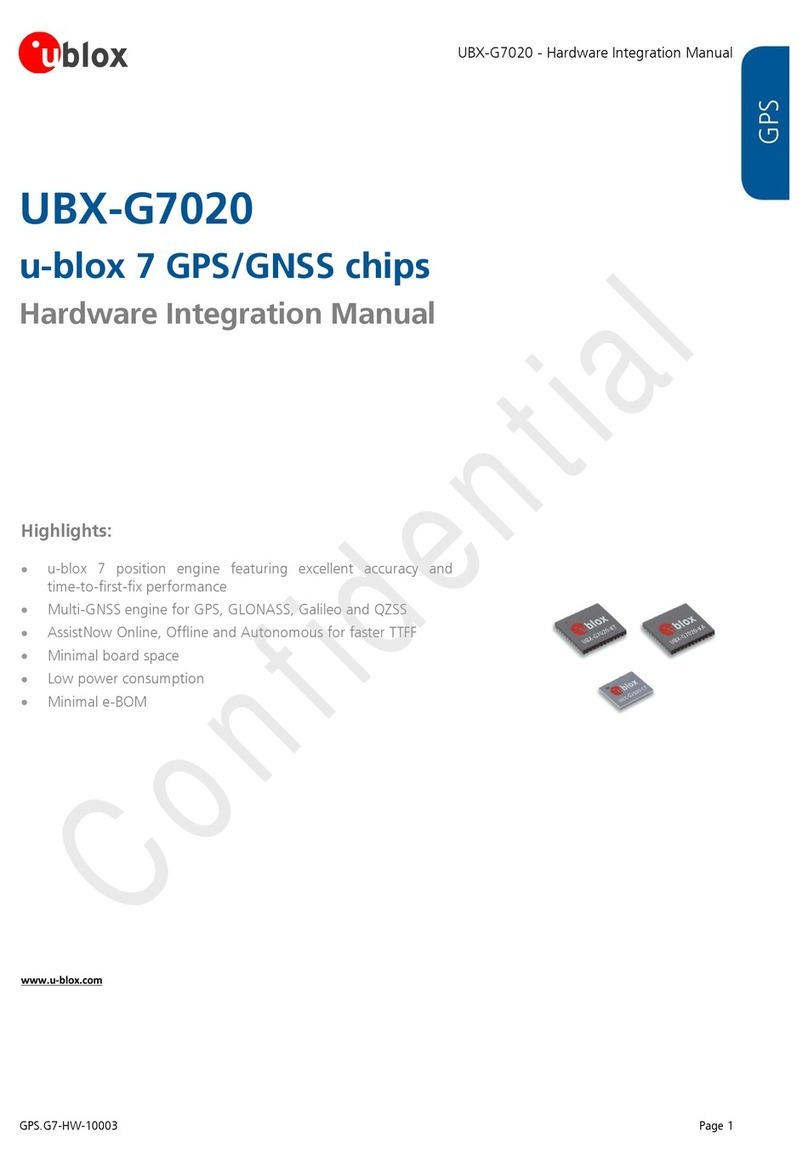
your position is our focus
4.3.1 PassiveAntenna .......................................................................................................................... 72
4.3.2 ActiveAntenna ........................................................................................................................... 73
4.3.3 ActiveAntennaBiasPower.......................................................................................................... 74
4.3.4 ActiveAntennaSupervisor........................................................................................................... 75
4.4 SerialCommunication ........................................................................................................................ 79
4.4.1 USARTPorts ................................................................................................................................79
4.4.2 USBSerialPort(LEA-4xandNEO-4S) ................................................................................... 81
4.4.3 UBXBinaryProtocol .................................................................................................................... 82
4.4.4 NMEAProtocol............................................................................................................................ 85
4.4.5 RTCMProtocol ............................................................................................................................ 88
4.4.6 Howtochangebetweenprotocols.............................................................................................. 89
4.5 Acquisition ......................................................................................................................................... 89
4.5.1 ColdstartStrategy ....................................................................................................................... 89
4.5.2 WarmstartStrategy ..................................................................................................................... 90
4.5.3 HotstartStrategy ......................................................................................................................... 90
4.5.4 Aiding/AssistedGPS(AGPS)....................................................................................................... 90
4.5.5 AssistNow®Online....................................................................................................................... 92
4.5.6 AssistNow®Offline ...................................................................................................................... 92
4.5.7 SuperSense®GPS-WeakSignalGPS(TIM-4H/LEA-4H/TIM-4S/LEA-4S) ..................................... 93
4.5.8 SensitivitySettings(TrackingandAcquisitionModes) .................................................................. 95
4.6 Navigation .......................................................................................................................................... 96
4.6.1 Overview..................................................................................................................................... 96
4.6.2 NavigationUpdateRate............................................................................................................... 97
4.6.3 DynamicPlatformModel ............................................................................................................. 97
4.6.4 StaticHoldMode ........................................................................................................................ 98
4.6.5 DegradedNavigation................................................................................................................... 99
4.6.6 AlmanacNavigation .................................................................................................................... 99
4.6.7 NavigationInputFilters.............................................................................................................. 100
4.6.8 NavigationOutputFilters........................................................................................................... 100
4.6.9 PositionQualityIndicators ......................................................................................................... 102
4.6.10 DGPS(DifferentialGPS) ............................................................................................................. 105
4.6.11 SBAS(SatelliteBasedAugmentationSystems) ........................................................................... 105
4.6.12 RAIM(ReceiverAutonomousIntegrityMonitoring).................................................................... 108
4.7 Timing .............................................................................................................................................. 109
4.7.1 TIMEPULSE ................................................................................................................................ 109
4.7.2 TimeMode................................................................................................................................ 113
4.7.3 Timemark.................................................................................................................................. 114
GPSModules-SystemIntegrationManual(SIM)(incl.ReferenceDesign) Contents
GPS.G4-MS4-05007-A1 Page 7


